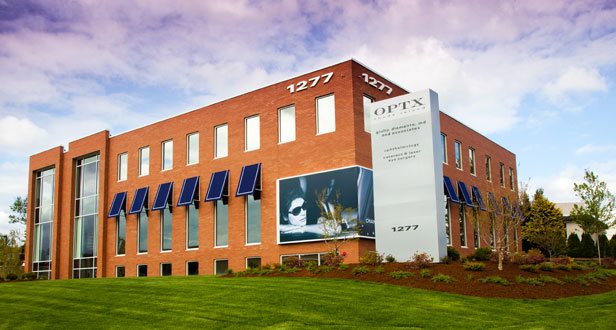Exams can make anyone nervous. Typically, the word exam is associated with a task that involves a lot of effort on your part or you might fail—a type of great undertaking. Eye exams don’t exist to make patients feel like failures, they exist to help them and protect their vision. For the most part when it comes to getting an eye exam you sit in a chair and let your eye doctor take of everything.
Here is What to Expect when you go in for an eye exam:
- First time? If this is your first time getting an eye exam with a practice, then you will most likely have to fill out an eye and medical history form. This will essentially just be a checklist with a bunch of potential symptoms you might be experiencing. Your eye doctor will use this for reference when he/she looks at your eyes during the exam.
- Snellen Chart: This isn’t as exotic as it sounds, in fact you have probably seen this a million times in movies, TV shows, advertisements, etc… The Snellen Chart (pictured above) is just a bunch of rows of text of varying sizes—the highest row being the largest and the lowest row the small. Your eye doctor will ask what is the furthest row down that you can read clearly.
- Retinoscope: Your eye doctor will use a little device called a retinoscope—A combination light/microscope. The retinoscope will be shined into your left and right eye so that your eye doctor can get an accurate read on your vision and estimate your strength of prescription.
- Lens one or lens two? This is the fun part of the eye exam! Your eye doctor will now have you look through multiple lenses and ask which one makes the Snellen Chart appear more clearly. You will hear “Does the chart appear clearer with lens one, or lens two?” a lot during this part.
- Occluder: At this point in the eye exam, the doctor will use mostly likely use a little paddle called an occluder. The occluder is used to block your vision one eye at a time to test how clear the individual sight in each eye is.
- Glaucoma Test: Commonly referred to as “the puff test,” involves a little puff of air from a machine into each of your eyes. This helps your eye doctor determine the fluid pressure inside your eyes.
- Eye dilation: You may or may not have to go through this part of the exam. If your doctor determines that he/she needs to dilate your eyes to get a closer look he will use special eye dilation drops.
That is the basics of what to expect when you go in for an eye exam. You should be getting your eyes checked at least once a year to ensure your eyes are remaining healthy.


